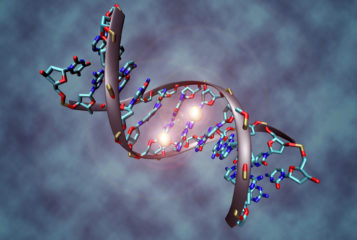Gene activity and protein identification has been revealed in organs and tumours to a high resolution using a novel method.
Scientists at Weill Cornell Medicine, New York, developed the method in order to be able to view how organs and tissues work at the microscale. Complex maps of organs and tumours can be created using the gene activity patterns, the identification of proteins and the cells' precise locations.
'This technology is exciting because it allows us to map the spatial organisation of tissues, including cell types, cell activities and cell-to-cell interactions, as never before,' said co-senior author Dr Dan Landau.
The spatial organisation of tissues is how molecules within the tissue are organised in three-dimensions. DNA sequences are transcribed into RNA and then translated into amino acid chains, which fold into functional proteins. Certain proteins and mRNAs are transported individually to particular locations, which in part make up the spatial organisation of the cell within a tissue.
Previous advances in sequencing technologies have allowed for the measurement of gene activity at a single-cell level, but this generally requires separating the tissue into individual cells before the mRNA of the cells can be measured. This results in the loss of information about the cell's location within the tissue.
The novel method, described in Nature Biotechnology, allows for the visualisation of mRNA and proteins in cells across tissue samples without having to break down the tissue, which provides a more comprehensive understanding of tissue organisation.
The method, which they called Spatial PrOtein and Transcriptome Sequencing (SPOTS), builds on existing technology and uses a library of designer antibodies to detect proteins in addition to mRNA, which can be mapped precisely to their original locations across the tissue sample.
The SPOTS method was first used for mapping out the cellular and functional organisation of a mouse spleen tissue and then further evaluated to determine the organisation of mouse breast cancer tissue, the scientists were able to spatially resolve two distinct states of immune cells called macrophages, one that was active and fighting the tumour and the other that was protecting it.
This ability of the method to spatially resolve the distinct states of the immune cells provides a deeper understanding of the role of immune cells in cancer development and how different microenvironments within the tumour influence the activity of these cells.
'We could see that these two macrophage subsets are found in different areas of the tumour and interact with different cells – and that difference in microenvironment is likely driving their distinct activity states' said Dr Landau. 'Such details of the tumour immune environment... might help explain why some patients respond to immune-boosting therapy and some don't, and thus could inform the design of future immunotherapies.'
The authors of the study expect that the SPOTS method can be extended to any tissues that are hard-to-resolve and have complex interfaces, providing a more comprehensive understanding of tissue organisation. The authors also hope to improve SPOTS, which currently has a spatial resolution for several cells, by narrowing this resolution to single cells.




Leave a Reply
You must be logged in to post a comment.